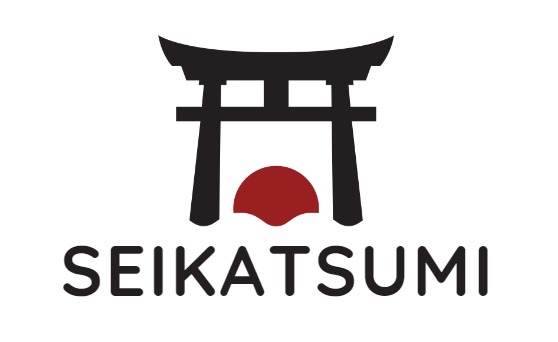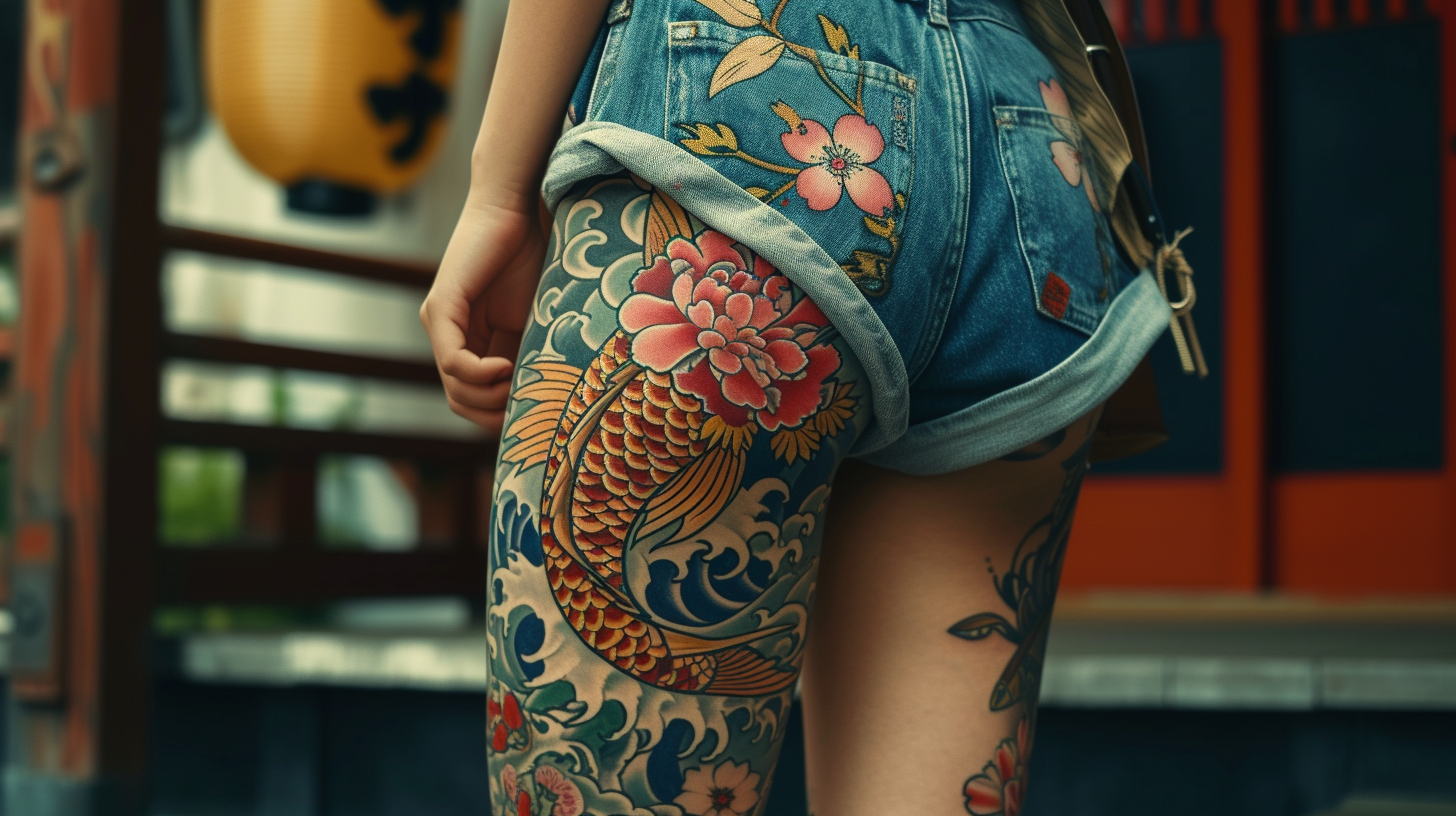Are you captivated by the artistry of Japanese leg tattoos? I am totally with you!
I know the fascination and dedication it takes to appreciate such intricate body art. That’s why I’ve delved deep into understanding every aspect of these tattoos.
If you’re thinking of embarking on this artistic journey, remember, finding a skilled artist is key.
These tattoos are not just ink on skin; they’re a testament to Japanese culture and a piece of living art.
So, are you ready to explore the profound world of Japanese leg tattoos?
Let’s dive in and embrace the beauty and depth of this extraordinary art form! 🙂
History of Japanese Leg Tattoos
As a tattoo enthusiast, I have always been fascinated by the intricate and meaningful designs of traditional Japanese tattoos.
Edo Period Influences
During the Edo period (1603-1868) in Japan, tattoos became increasingly popular among the lower classes, particularly laborers and peasants.
These tattoos, known as irezumi, were often large and intricate, covering the entire back, arms, and legs.
The designs were heavily influenced by woodblock prints, which were popular at the time and featured similar bold lines and vibrant colors.
Leg tattoos, in particular, were often used to convey a sense of strength and power. Samurai warriors, for example, would often have tattoos on their legs to show their bravery and skill in battle.
Other common designs included dragons, koi fish, and cherry blossoms, each with their own symbolic meaning.
Modern Revival
In the late 19th and early 20th centuries, irezumi fell out of favor in Japan, due in part to its association with criminal gangs and the lower classes.
However, in recent years, there has been a resurgence of interest in traditional Japanese tattoos, both in Japan and around the world.
Today, many tattoo artists specialize in traditional Japanese designs, including leg tattoos. These tattoos often incorporate modern techniques and styles, while still staying true to the traditional motifs and symbolism.
Whether you’re looking for a bold, full-leg design or a smaller, more subtle piece, a Japanese leg tattoo is a timeless and meaningful choice.
Hey you! Are you interested in more tattoo trends? Then be sure to check out our top tattoo articles! You definitely can’t miss it!
Japanese Skull & Oni Mask Tattoos: 100+ Ideas You’ll Love 2024
The Best Japanese Half Sleeve Tattoos 2024: 25+ Be the next Trendsetter!
60+ Japanese Anime Tattoos: Expert Tips for Timeless Ink Mastery 2024
Significance of Designs

As someone who has always been fascinated by Japanese culture, I find Japanese leg tattoos to be one of the most beautiful and meaningful forms of body art.
The intricate designs and vibrant colors are a testament to the rich history and mythology of Japan.
Mythological Creatures
One of the most common designs found in Japanese leg tattoos is the depiction of mythological creatures such as dragons, phoenixes, and kirin.
These creatures are often seen as symbols of power, strength, and good fortune. For example, the dragon is a revered creature in Japanese mythology, representing wisdom, strength, and good luck.
Similarly, the phoenix is a symbol of rebirth, transformation, and renewal.
Floral Motifs
Another popular design element in Japanese leg tattoos is floral motifs. Flowers such as cherry blossoms, lotus flowers, and chrysanthemums are often used to represent different qualities and emotions.
For example, the cherry blossom is a symbol of the fleeting nature of life, while the lotus flower represents purity and enlightenment.
Chrysanthemums, on the other hand, are often associated with the autumn season and are seen as a symbol of the impermanence of life.
Spiritual Symbols
Lastly, many Japanese leg tattoos incorporate spiritual symbols such as kanji characters and Buddhist imagery. These symbols are often used to convey a deeper meaning or to represent a specific aspect of Japanese culture.
For example, the kanji character for “strength” or “courage” is a popular design element, as is the image of the Buddha or other Buddhist deities.
Tattoo Placement and Sizing

As someone who loves Japanese leg tattoos, I know how important it is to choose the right placement and sizing.
Here are some tips to help you make the best decisions for your tattoo:
Thighs and Calves
The thighs and calves are some of the most popular areas for Japanese leg tattoos. When it comes to sizing, it’s important to consider the natural curves of your leg.
A design that is too small or too large can look awkward and out of place. As a general rule, smaller designs work best on the calves, while larger designs can work well on the thighs.
Placement is also important. A design that wraps around the entire leg can be stunning, but it’s not always practical. Consider your lifestyle and wardrobe when choosing the placement of your tattoo.
If you wear shorts or skirts often, a design on the thigh may be more visible and eye-catching. If you prefer pants or longer skirts, a design on the calf may be a better choice.
Full Leg Sleeves
Full leg sleeves are a popular choice for those who want a cohesive and dramatic design. When it comes to sizing, it’s important to work with your tattoo artist to create a design that fits your leg perfectly.
A design that is too small or too large can be distracting and take away from the overall impact of the tattoo.
Placement is also important when it comes to full leg sleeves. A design that starts at the ankle and goes all the way up to the thigh can be stunning, but it’s not always practical.
Consider your lifestyle and wardrobe when choosing the placement of your tattoo. If you wear pants often, a design that starts at the knee may be a better choice.
If you wear shorts or skirts often, a design that starts at the ankle may be more visible and eye-catching.
Cultural Impact and Acceptance
As someone who has a passion for Japanese art and culture, I find Japanese leg tattoos to be incredibly fascinating.
However, it’s important to understand the cultural impact and acceptance of tattoos in Japan.
Tattoo Taboos in Japan

In Japan, tattoos have long been associated with the yakuza, the Japanese mafia, and as a result, tattoos are often viewed as taboo. While attitudes towards tattoos are slowly changing, many Japanese people still consider tattoos to be a sign of criminal activity.
In fact, some public places such as hot springs, public baths, and swimming pools prohibit entry to those with visible tattoos.
Additionally, tattoos can also be a barrier to employment in Japan.
Many companies require employees to cover up their tattoos, and some even have a strict no-tattoo policy.
Western Fascination
Despite the negative connotations associated with tattoos in Japan, there is a growing fascination with Western-style tattoos among young people.
Many Japanese people are drawn to the intricate designs and vibrant colors of Western tattoos, and some even travel overseas to get tattooed.
In recent years, some Japanese tattoo artists have gained international recognition for their unique style and traditional techniques.
One such artist is Horiyoshi III, who is known for his full-body tattoos and intricate designs.
Choosing the Right Artist
When it comes to Japanese leg tattoos, choosing the right artist is crucial.
Not only will they be responsible for creating a piece of art that will be with you for the rest of your life, but they will also be responsible for ensuring that the tattoo is done safely and hygienically.
Traditional Techniques
If you are interested in a more traditional Japanese leg tattoo, it is important to find an artist who is skilled in traditional techniques.
This may include tebori, a traditional Japanese tattooing method that involves using a handheld tool to puncture the skin.
It is also important to find an artist who is knowledgeable about traditional Japanese tattoo designs and can create a design that is both authentic and meaningful.
Contemporary Styles

If you are looking for a more contemporary Japanese leg tattoo, you may want to look for an artist who specializes in contemporary styles.
This may include artists who are skilled in creating abstract designs or who are able to incorporate elements of other tattoo styles, such as realism or neo-traditional, into their work.
When choosing an artist, it is important to do your research. Look for artists who have a strong portfolio of work, particularly in the style that you are interested in.
You may also want to consider the artist’s experience and reputation in the tattoo community.
Ultimately, the most important factor in choosing the right artist is finding someone who you feel comfortable with and who you trust to create a beautiful and meaningful piece of art.
My personal favorite leg tattoo!
I have a strong preference for black and white tattoos, especially when they feature samurai imagery combined with lotus leaves.
There’s something incredibly striking about the contrast of the monochrome ink; it really brings out the intricate details and the timeless elegance of the samurai, a symbol of honor and bravery.
The addition of lotus leaves adds a layer of depth and symbolism, representing purity and spiritual awakening.
This fusion not only reflects a deep appreciation for Japanese culture and art but also creates a visually stunning and meaningful piece of body art that resonates with me personally.
Frequently Asked Questions
What are Japanese leg tattoos?
Intricate, often large-scale tattoos inspired by traditional Japanese art and symbolism, covering part or all of the leg.
What themes are common in Japanese leg tattoos?
Popular themes include koi fish, dragons, cherry blossoms, and samurai imagery.
How are Japanese leg tattoos viewed culturally?
Views vary; they’re admired for their artistry but can have complex social perceptions due to historical associations with the Yakuza.
If you liked this blog article about japanese leg tattoos, don’t forget to follow us on Pinterest so you don’t miss any more tattoo tips.
Let us know, which of the above ist your favorite leg tattoo!




















